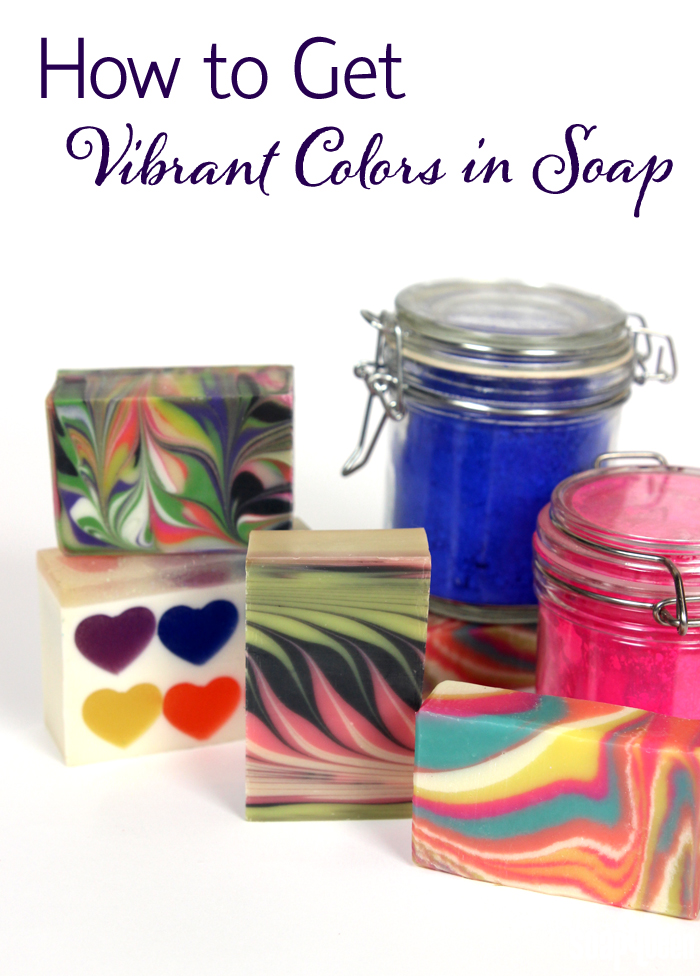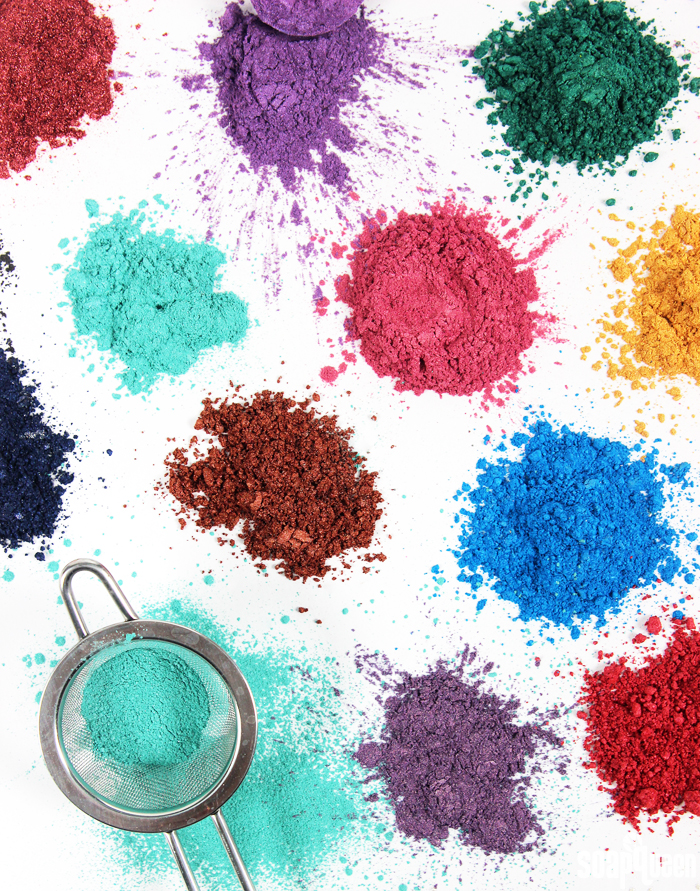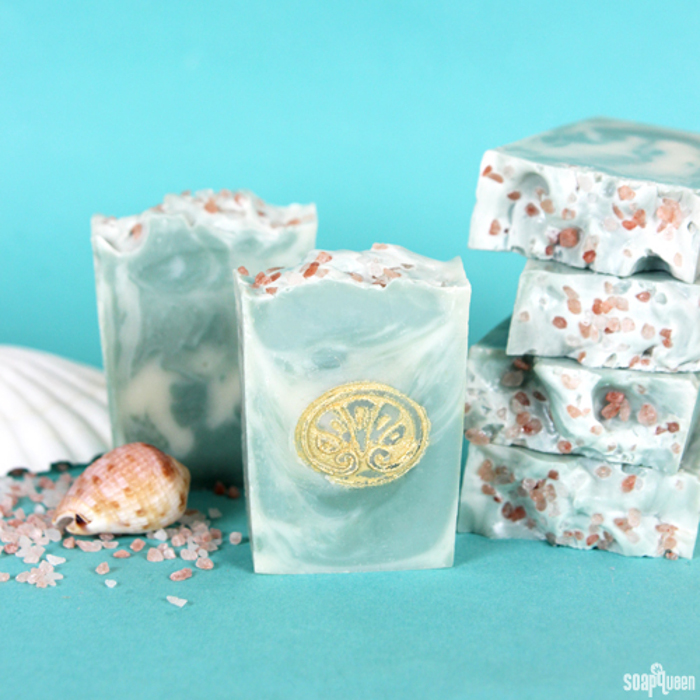
There are so many color options when it comes to soaping. You can choose a vibrant neon palette with plenty of pinks and oranges, or a more subtle and rustic palette with natural blue and gray tones. If you’re going for a vibrant palette, there are several tips and tricks to make your colors really pop. Bright colors can help your soap stand out and catch the eye of a potential customer. Not to mention you can impress loved ones with your excellent soapy skills and color selections =). Let’s dive into the factors that affect the vibrancy of your soapy creations!
Color Options
What colorant you use plays a big role in how vibrant the soap will be. For instance, micas create gorgeous color in melt and pour soap, but some can morph or fade in cold process soap. Before choosing the colorant for your recipe, make sure to check how it performs. The descriptions on Bramble Berry have information on how the color performs, and some also have pictures of the colors in a finished bar of soap. The Talk It Out Tuesday: Colorants post also has helpful information, including how to use each color in your recipe.
 Mica colorants work great in melt and pour soap, but some can fade in cold process soap.
Mica colorants work great in melt and pour soap, but some can fade in cold process soap.
- Micas: Mica colorants are a great option for melt and pour soap. They come in a variety of colors, and also add a beautiful shimmer to your projects. Check out the bright hues in the Romantic Rose Gold Melt and Pour Bars, which use several micas like Rose Gold and Super Pearly White. Before using micas in cold process, make sure to check to descriptions on Bramble Berry. They can fade or change colors in your recipe. The good news is micas that fade in cold process can be used as mica painting on top of it. They can also be used for mica lines, as seen in the Spiced Copper Cold Process Soap Tutorial. Learn more about micas in this Sunday Night Spotlight.
- Pigments: Pigments are a great option for achieving brightly colored cold process soap. They stay true in the soap and there are plenty of colors to choose from. The Psychedelic Spin Swirl Cold Process Soap uses 5 different pigments to create a fun 60s vibe. Pigments can also be used for melt and pour soap, but some of the heavier ones (like Chrome Green Oxide Pigment) can clump or speckle the soap. To prevent that, you can mix the color with liquid glycerin or 99% isopropyl alcohol before adding it to the soap. You can also use color blocks. They are super concentrated pigments and micas that mix easily into melt and pour soap.
- LabColors: These liquid dyes are super concentrated and work for cold process and melt and pour soap. LabColors are another favorite option of mine when I want incredibly vibrant, bright hues. They do need to be diluted before use. Learn how to do that here. High pH LabColors are used for cold process soap. The Layered Lavender Cold Process Soap Tutorial gets its lovely hue from Periwinkle High pH LabColor. Melt and pour soap can be used with low and high pH colors. Check out the amazing amethyst color from Easter Purple High pH LabColor in the How to Make Soap Gems video on Soap Queen TV. LabColors do bleed, which is something to keep in mind when planning your design.
- Natural Colorants: Natural colorants, like clays and herbs, create lovely hues in melt and pour and cold process soap. Natural colorants tend to be a little more subdued than other colorant options, but there are tricks to make natural colorants more bright. For instance, we recommend adding natural indigo powder to your lye water for a darker blue. Read more about using natural colorants in this Sunday Night Spotlight. You can combine the natural colorants with another colorant to create a more vibrant shade. In the Sea Clay Swirl Cold Process Tutorial, sea clay is mixed with Hydrated Chrome Green for a minty green shade.
 The Sea Clay Swirl Cold Process Soap uses a clay and a pigment to create the minty green shade.
The Sea Clay Swirl Cold Process Soap uses a clay and a pigment to create the minty green shade.